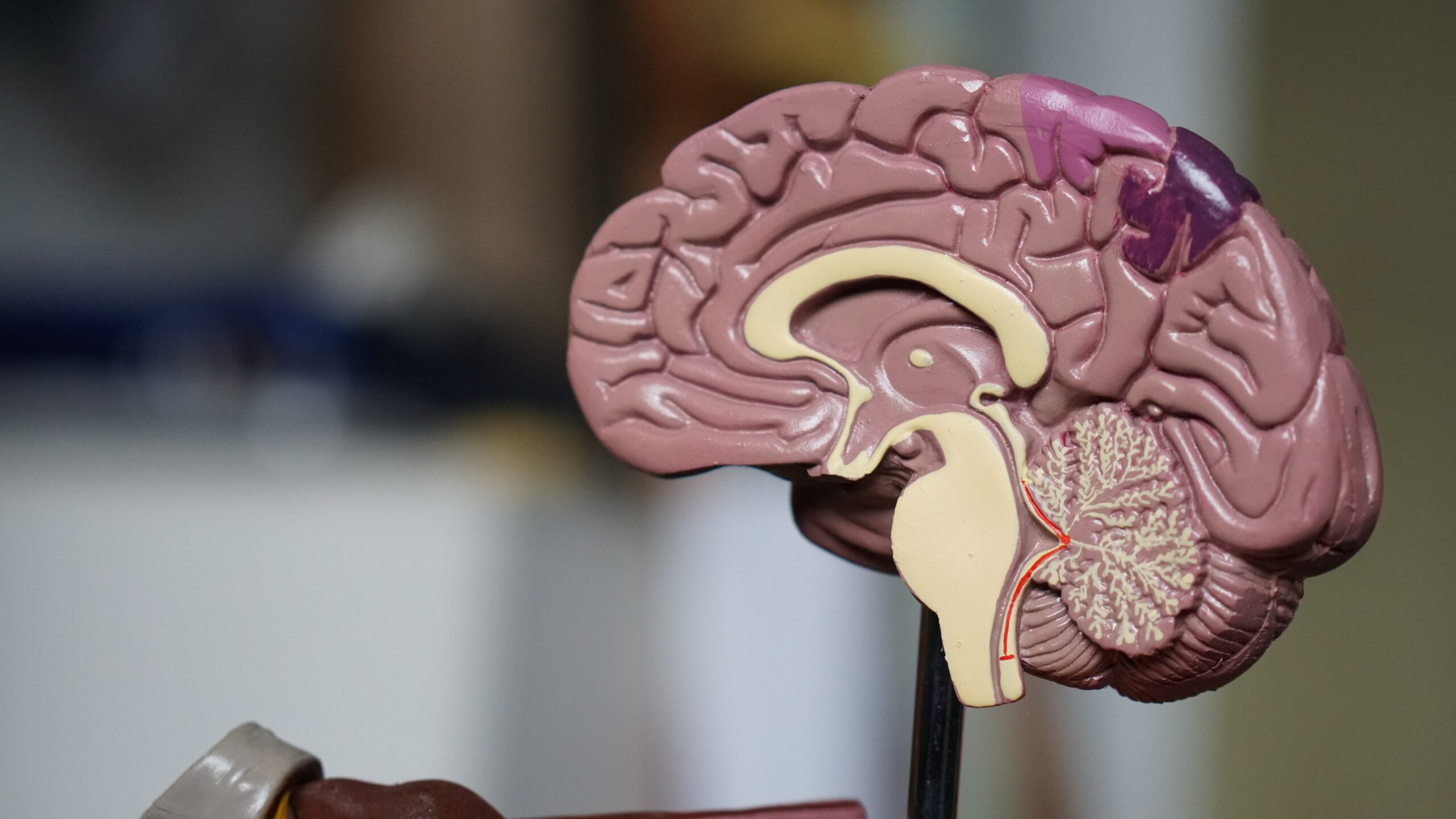Brain plasticity refers to the ability of the brain to change its structure and function in response to environmental stimuli or internal processes. Brain plasticity plays a crucial role in learning, memory, and adaptation to stress and injury. Impaired brain plasticity has been implicated in the pathophysiology of depression and other mental disorders. It is essential for normal development, adaptation, and recovery from injury or disease. Brain plasticity can be measured by various methods, such as neuroimaging, electrophysiology, and behavioral tests.
Transcranial Magnetic stimulation (TMS) can also be used as a tool to assess and stimulate brain plasticity. TMS is a non-invasive brain stimulation technique that uses magnetic fields to generate electrical currents in the brain. The magnetic fields are delivered through a coil placed over the scalp, which can target specific brain regions and induce changes in cortical excitability and synaptic plasticity. TMS has been used for various applications, including mapping of cortical function, pain relief, and treatment of neurological and psychiatric disorders such as Major Depressive Disorder (MDD), TBI and autism.
Depression is a complex mental disorder characterized by persistent sadness, loss of interest or pleasure, feelings of worthlessness or guilt, decreased energy, and cognitive impairment. This article will explore the current evidence and hypotheses on how TMS affects brain plasticity and functional connectivity in depression, and what implications this has for diagnosis, prediction, and therapy.
TMS Techniques and Protocols
TMS is based on the principle of electromagnetic induction, which generates a rapidly changing magnetic field that induces an electrical current in the brain tissue. TMS can be used as both a measurement tool and a therapy for various neurological and psychiatric conditions. TMS can be delivered in various forms, including single-pulse TMS (sTMS), repetitive TMS (rTMS), and theta-burst stimulation (TBS). sTMS delivers a single pulse of magnetic stimulation whereas rTMS delivers a train of repetitive magnetic pulses to a targeted brain region at a specific frequency to make lasting changes in synaptic plasticity. In this way, TMS has also been used as a therapeutic tool for depression and other neuropsychiatric disorders. TMS can also be combined with electroencephalography (EEG) (TMS-EEG) to measure the responses evoked in the brain by TMS pulses in real-time or to treat brain conditions such as TBI and autism. TMS-EEG can provide information on the state of cortical excitability and plasticity, as well as on the effective connectivity between different brain regions. Cortical excitability refers to the level of activity or responsiveness of the neurons in the brain. Effective connectivity refers to the information flow between brain regions.
TMS and Brain Plasticity
TMS can influence brain plasticity and functional connectivity by applying different protocols that mimic natural forms of synaptic plasticity, such as long-term potentiation (LTP) and long-term depression (LTD). LTP and LTD are processes that increase or decrease the strength of connections between neurons, respectively and are thought to underlie learning and memory. TMS protocols can induce LTP-like or LTD-like effects. These protocols can modify the excitability of the stimulated brain region and its connected areas, as well as alter the connectivity between different brain networks.2 Several studies have used TMS and TMS-EEG techniques to investigate how TMS affects brain plasticity and connectivity in healthy subjects and in various neurological and psychiatric conditions. Meta-analyses have found significant connectivity changes in response to TMS3, including altered connectivity between the sensory and motor cortex regions of the brain, parietal lobe and the hippocampus, parietal lobe and motor network (which have important implications for patients with movement or hallucinatory symptoms) and between the default node network and salience network, which regulate depressive symptoms.
TMS and Depression
TMS has been shown to be effective in relieving depression symptoms and improving mood in patients with depression and treatment-resistant depression. Several clinical trials and meta-analyses have demonstrated that TMS can reduce the severity of depression, increase the remission rate, and improve the quality of life of depressed patients.4 Trials have found that TMS was significantly more effective than sham (placebo) treatment in reducing symptoms of depression. However, more research is needed as 80-90% of patients with recurrent major depressive disorder (MDD) will relapse without maintenance treatment.
TMS has also been studied in patients with bipolar disorder, with some studies showing promising results.9 However, some studies have found that TMS is less effective in patients with psychotic depression compared to non-psychotic depression.7 A recent study suggested that different clusters of depression symptoms may respond better to specific TMS targets, indicating that TMS therapy may be personalized according to the patient’s profile. The mechanisms of how TMS improves depression symptoms and mood are not fully understood, but they may involve enhancing brain plasticity and functional connectivity.8 Research has suggested that TMS may work by modifying neural circuits involved in mood regulation.9 TMS has been shown to impact cognitive control processes related to emotion regulation, which may be critical to its mechanism of action in depression.
TMS, Brain Plasticity, and Depression
The antidepressant effects of TMS may be mediated by enhancing brain plasticity and functional connectivity in depression. Several hypotheses have been proposed to explain how TMS may modify these processes in depression.
One such hypothesis is that TMS may restore the balance between excitatory and inhibitory neurotransmission, which is impaired in depression.1 TMS may affect the levels of neurotransmitters such as serotonin, dopamine, norepinephrine, and glutamate, which are involved in mood regulation and are often dysregulated in depression.1,11 Another hypothesis is that TMS may increase neurogenesis and neurotrophic factors, which are reduced in depression.12 Neurogenesis is the process of generating new neurons from neural stem cells and neurotrophic factors are molecules that support the survival, growth, and differentiation of neurons—TMS may enhance both.
Another theorized pathway is TMS modulating stress-related circuits, which are overactivated in depression.1 Stress is a major risk factor for depression and can provoke structural and functional changes in the brain. TMS may reduce the activity of the hypothalamic-pituitary-adrenal (HPA) axis, which is the main stress response system in the body. TMS may also affect the activity of other brain regions involved in stress regulation, such as the amygdala, which is involved in fear and anxiety, and the prefrontal cortex, which is involved in cognitive control and emotion regulation.
TMS Implications for Diagnosis
TMS measures of brain plasticity can be used as biomarkers—objective indicators of a biological state or process that can be measured and evaluated— for diagnosis, prediction of treatment response, and optimization of therapy in depression. They can also reveal the individual variability and predictors of response to TMS protocols. For example, some studies have found that the baseline cortical excitability and plasticity measured by TMS-EEG can predict the antidepressant response to TMS.13 These biomarkers may help to select the most suitable candidates for TMS therapy, to personalize the stimulation parameters according to the patient’s profile, and to monitor the treatment progress and outcome.
TMS has demonstrated efficacy in the treatment of depression and improving mood in patients with depression and treatment-resistant depression. While TMS has been shown to modulate neural circuits involved in mood regulation, its precise mechanism of action is not yet fully understood. Being that TMS can alter neuronal excitability, synaptic transmission, and plasticity, it may lead to changes in brain plasticity which counteract depression. TMS can induce changes in cortical and subcortical brain regions’ connectivity, which is thought to be critical for cognitive and affective processing. TMS can also prompt changes in effective connectivity, spurring the functional re-organization of the brain and the emergence of new cognitive and affective functions, and perhaps reduction of depressive symptoms.
References
- Jannati A, Oberman LM, Rotenberg A, Pascual-Leone A. Assessing the mechanisms of brain plasticity by transcranial magnetic stimulation. Neuropsychopharmacology. 2023;48(1):191–208.
- Ferreri F, Rossini PM. TMS and TMS-EEG techniques in the study of the excitability, connectivity, and plasticity of the human motor cortex. Rev Neurosci. 2013;24(4):431-442. doi:10.1515/revneuro-2013-0019
- Fox MD, Halko MA, Eldaief MC, Pascual-Leone A. Measuring and manipulating brain connectivity with resting state functional connectivity magnetic resonance imaging (fcMRI) and transcranial magnetic stimulation (TMS). NeuroImage [Internet]. 2012;62(4):2232–43. Available from: https://dx.doi.org/10.1016/j.neuroimage.2012.03.035
- George MS. Transcranial magnetic stimulation for the treatment of depression. Expert review of neurotherapeutics. 2010 Nov 1;10(11):1761-72.
- Sonmez AI, Camsari DD, Nandakumar AL, Voort JLV, Kung S, Lewis CP, et al.. Accelerated TMS for Depression: A systematic review and meta-analysis. Psychiatry Research. 2019;273:770–81.
- Mcclure RK. Neuromodulation Treatments in Clinical Practice: Should TMS Be Used for the Treatment of Major Depressive Disorder?. Journal of Psychology & Clinical Psychiatry. 2014;1(3).
- Siddiqi SH, Taylor SF, Cooke D, Pascual-Leone A, George MS, Fox MD. Distinct Symptom-Specific Treatment Targets for Circuit-Based Neuromodulation. American Journal of Psychiatry. 2020;177(5):435–46.
- Dubin M. Imaging TMS: antidepressant mechanisms and treatment optimization. International Review of Psychiatry [Internet]. 2017;29(2):89–97. Available from: https://dx.doi.org/10.1080/09540261.2017.1283297
- Philip NS, Barredo J, Aiken E, Carpenter LL. Neuroimaging mechanisms of therapeutic transcranial magnetic stimulation for major depressive disorder. Biological Psychiatry: Cognitive Neuroscience and Neuroimaging. 2018 Mar 1;3(3):211-22.
- Lantrip C, Gunning FM, Flashman L, Roth RM, Holtzheimer PE. Effects of Transcranial Magnetic Stimulation on the Cognitive Control of Emotion: Potential Antidepressant Mechanisms. J ECT. 2017;33(2):73-80. doi:10.1097/YCT.0000000000000386\
- Kaptsan A, Yaroslavsky Y, Applebaum J, Belmaker RH, Grisaru N. Right prefrontal TMS versus sham treatment of mania: a controlled study. Bipolar Disord. 2003;5(1):36-39. doi:10.1034/j.1399-5618.2003.00003.x
- Ferro M, Lamanna J, Spadini S, Nespoli A, Sulpizio S, Malgaroli A. Synaptic plasticity mechanisms behind TMS efficacy: insights from its application to animal models. Journal of Neural Transmission. 2022;129(1):25–36.
- Lissemore JI, Mulsant BH, Bonner AJ, et al. Transcranial Magnetic Stimulation Indices of Cortical Excitability Enhance the Prediction of Response to Pharmacotherapy in Late-Life Depression. Biol Psychiatry Cogn Neurosci Neuroimaging. 2022;7(3):265-275. doi:10.1016/j.bpsc.2021.07.005






